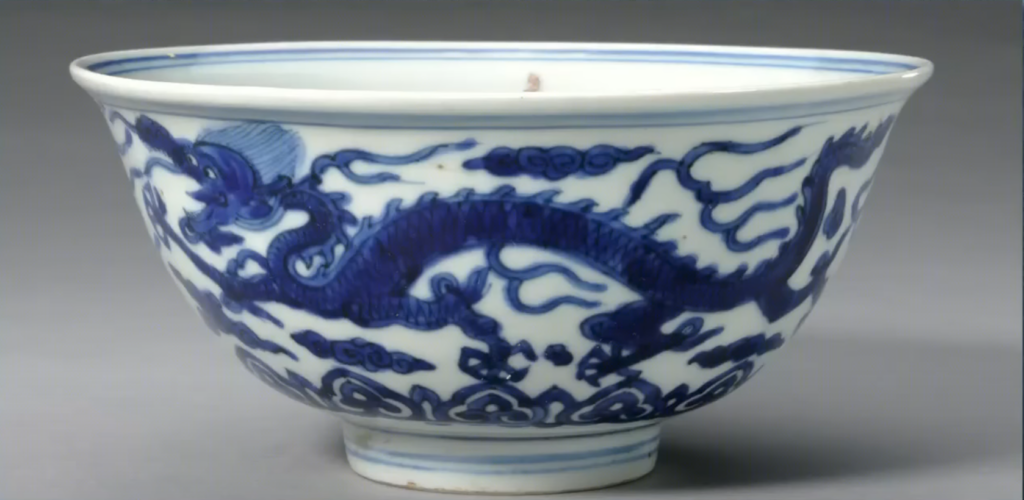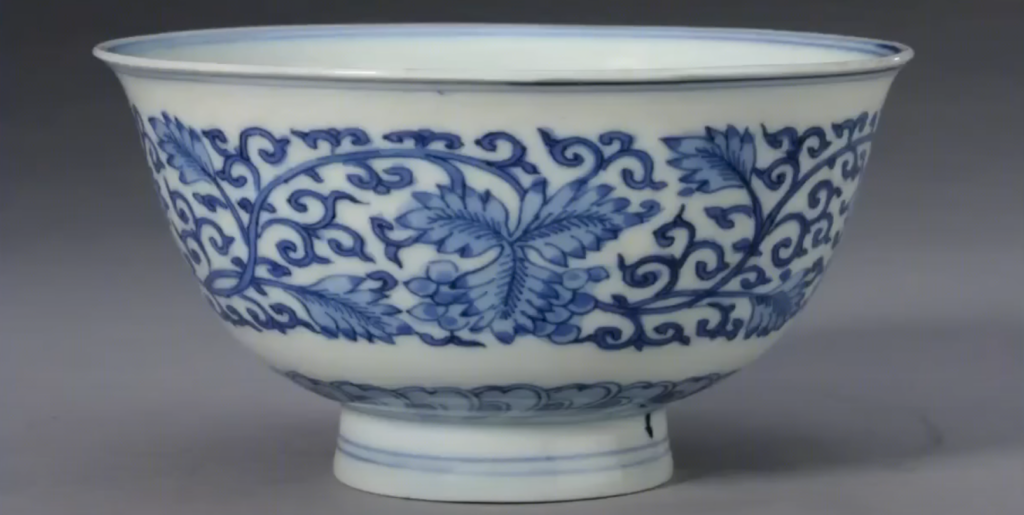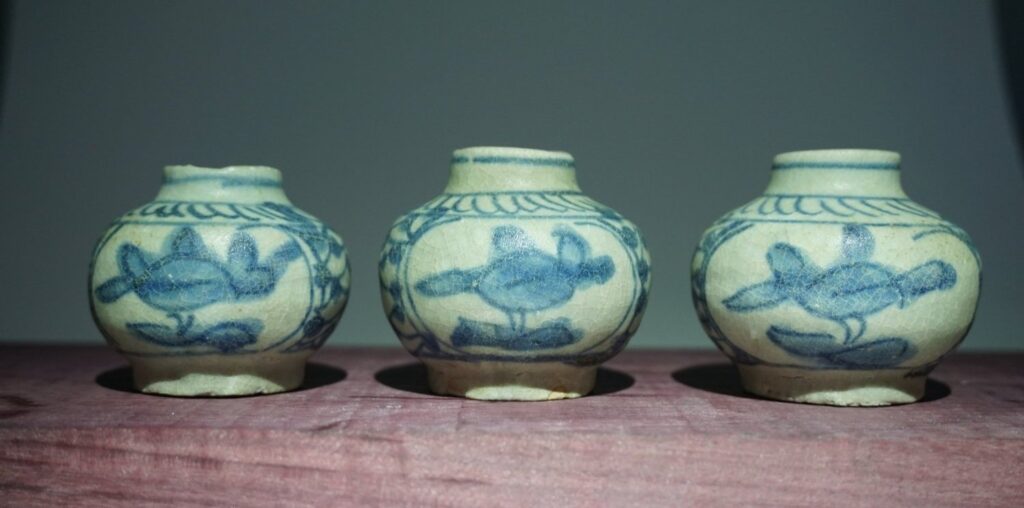
Wanli was #13 of 16 Ming Dynasty emperors, ruled from 1572 to 1620. Never an emperor at heart, he neglected his duties and the government weakened, setting in motion the fall of the Ming Dynasty.
In the first two decades of his reign the ceramics industry boomed. Previous trade embargoes were unenforced, exports were up, and trade to Southeast Asia reached an 800-year peak.
Around the 24th year of Wanli’s 48-year reign, potters had used up their supply of the imported cobalt blue. It had been imported via Central Asian trade routes, but those under Wanli’s reign had since collapsed. They switched to the domestic alternative, and it fired to a slightly different shade of blue. So Wanli ceramics can be roughly dated by which shade of blue they have.
Wanli ceramics from 1572 to 1596 have a purplish shade of blue. The color is deeper and denser.

From 1596 to 1620, using the local substitute, the blue had a silver or grey shade. The color is lighter and brighter.

While the shade of blue changed, the painting technique did not. Notice the designs on both bowls above were painted with two brush techniques: first using the fine point to outline the composition, and then second using the broader side of the brush to wash and fill.
At the end of Wanli’s reign, the economy was in shambles, and the ceramics industry and exports shrank. Chinese ceramics entered the Transitional Period when the Ming collapsed and descended into war with the Manchus who started the following Qing Dynasty.
